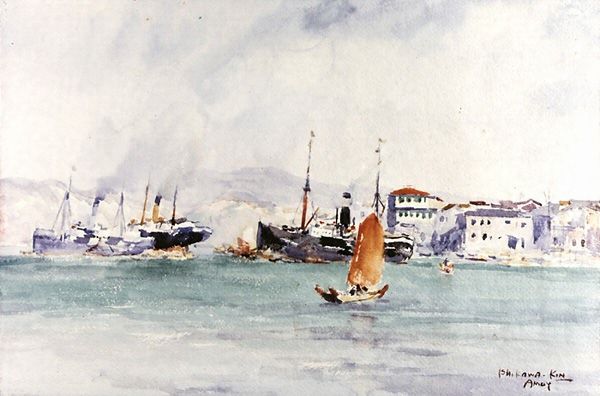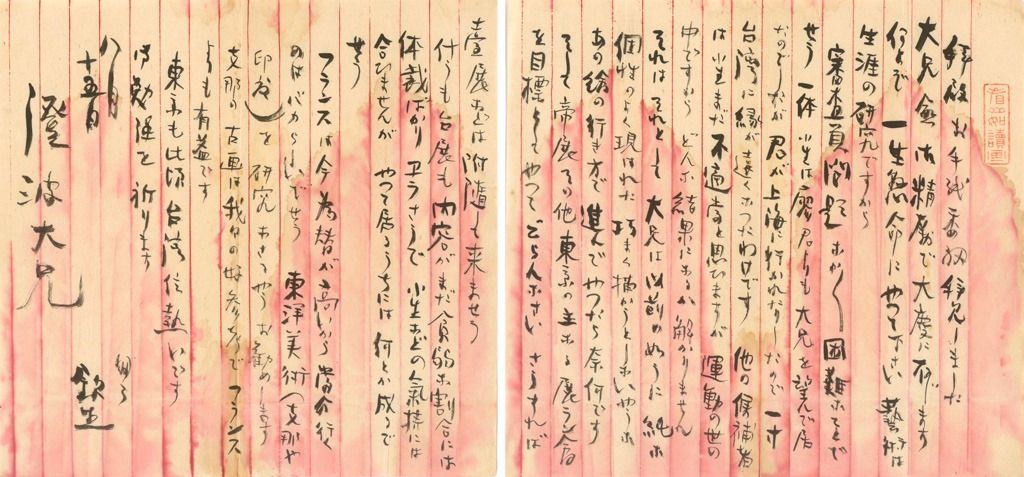
Facebook:https://www.facebook.com/ecthelion1993/ 美術史是研究美術品與時代文化交涉互動下的歷史研究,而當代讀者的閱讀及傳播也參與了美術史的形塑。五丁目期待透過不同形式的短篇筆記,提供關心文化、喜好藝術的各位一個富知識性的生活提案。
Painters worried about exchange rates

"Traveling to a foreign country always faces the problem of currency directly. Once you step into a foreign country, you can't do anything without the currency of that country. Usually, it doesn't matter at all about the price of the surrogate field (foreign exchange market). But I heard an explanation at the bank. What is the market price today, and then when I exchange it for the country's currency, I feel that the rise and fall of the market price cannot be ignored."
In 1927, Japanese painter Ishikawa Kinichiro, who was teaching in Taiwan, briefly went to Xiamen and Shantou, China to sketch. [Picture 1] After returning to Taiwan, I told the newspaper how I felt when faced with foreign exchange fluctuations.
"At this time, because silver was cheaper than gold, 90 yuan of Japanese gold was exchanged for about 1 yuan in China (China). Compared with the previous year (1925), when I went to Fuzhou, more than 20 yuan of Japanese gold was exchanged for 1 yuan in China, which can be said to have changed a lot. ."[1]
The reason why Ishikawa could exchange less Japanese currency for Chinese silver dollars may be related to the violent fluctuation of international silver prices at that time, which affected the exchange rate of Chinese silver dollars. Regarding this point, 5-chome is not a major in financial history. If there are any mistakes, I hope you will give me more advice.

In any case, it seems that even Ishikawa, who has extensive experience abroad, was troubled by the drastic changes in the international situation during the interwar period and foreign exchange issues. Therefore, in the 1930s, his former student Chen Chengbo wanted to study in Paris, France, and when he was learning French, Ishikawa sent a letter stating:
"Currently, the exchange rate is high, and it is not a wise move to study in France. My brother should study Oriental art (China or India). Ancient Chinese paintings are suitable for my generation to refer to, and it is more beneficial than studying in France."[2]
In the early 1930s, Japan was hit by the Great Depression that broke out in previous years. The government suspended gold exchange and the Japanese currency depreciated greatly. [3] Ishikawa gave very accurate suggestions taking into account the international situation, the economic ability of his disciples, his creative interest and style.

Travel always comes with challenges, and with globalization, it has become easier for painters to go abroad to sketch, study abroad or find buyers. However, the drastic changes in the international situation at the beginning of the 20th century also caused the artists to face more changes in their art industries, and they went through one challenge after another in the precarious wind and rain.
---
Notes:
[1] For the original text, see Ishikawa Kinichiro, "Xiamen and Shantou", Taiwan Times, 1927-02, p. 58. For translation, refer to Cai Jiaqiu, "Grass Pillow: The Creation and Travel of Japanese Calligraphers and Painters in Taiwan in the Early Period of Japanese Occupation (1908-1927)", Master's Thesis, Institute of Art History, National Taiwan University, 2007, p. 29.
[2] See [Figure 2] for the original text. For translation, refer to Matsushita Ronko et al., "Taiwan's Modern Art: Group Portraits of International Students たちの Youth (1895-1945)", Tokyo: Impression Society, 2016, p. 71.
[3] Mariko Hatase, "Japan's replacement and output during the war period ~ the first half of the 1930s, the influence of the replacement and the sudden fall", "Financial Research" June issue (Tokyo, 2002-06), p. 97- 136.
Like my work?
Don't forget to support or like, so I know you are with me..
Comment…